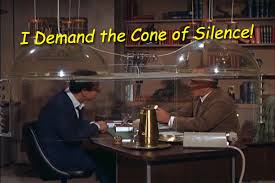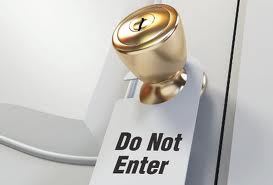 More than a decade ago, I attended a BoardSource conference/workshop at Sears’ corporate offices in Hoffman Estates, Illinois. During one of the sessions, the trainer shared her teachable point of view on how often boards should go into executive session, which she explained was at the end of every meeting. I’m dedicating today’s post as a counter-weight to that practice.
More than a decade ago, I attended a BoardSource conference/workshop at Sears’ corporate offices in Hoffman Estates, Illinois. During one of the sessions, the trainer shared her teachable point of view on how often boards should go into executive session, which she explained was at the end of every meeting. I’m dedicating today’s post as a counter-weight to that practice.
If you are intrigued and want to learn more about this teachable point of view, click here to read a post written by Jan Masaoka on Blue Avocado. She does a nice job of making the case.
Of course, there is a flip side to this position.
Let me start by clearly saying . . . I believe there is a time and place for a board to kick staff out of the boardroom and go into executive session. Here are a few examples:
- when the board needs to discuss the executive directors compensation package
- when the board is discussing the findings of an investigation involving the executive director
- when the board wants to hear directly from the auditor (esp. when there might be financial oversight questions pertaining to staff)
There are a few other good reasons; however, there aren’t many in my opinion.
 After attending the BoardSource workshops at Sears as a young and naive executive director, I brought a ton of good ideas back home with me and shared them with the Board Development Committee. One of those ideas was for the board to go into executive session as a regular practice at the end of every meeting.
After attending the BoardSource workshops at Sears as a young and naive executive director, I brought a ton of good ideas back home with me and shared them with the Board Development Committee. One of those ideas was for the board to go into executive session as a regular practice at the end of every meeting.
At first, I found this practice preferable. It sure as heck was better than watching all of the informal “meetings after the meeting” that occurred in the parking lot. However, as time passed, I discovered that executive session had evolved, and board volunteers were now having discussions that I should be a part of.
Prior to implementing this practice, we didn’t have a discussion about what was appropriate versus inappropriate topics of discussion during the executive session time period. So, without an experienced facilitator or any rules of the road, conversations wandered and devolved.
In my experience, the “going into executive session as a regular practice” became demoralizing. If the board didn’t feel comfortable including me in discussions pertaining to or impacting operations, then they needed to fire their executive director.
If your organization is looking at adopting the “going into executive session as a regular practice,” then here are two things you need to weigh against each other:
- Is it more important to foster what the Blue Avocado post describes as: “This ‘sense of self’ is an intangible yet critical underpinning for board leadership“?
- Or is it more important for your agency to cultivate and grow the ‘sense of team‘ between the board and its executive director?
I suspect the answer to these questions will vary for different organization. However, it is important to answer these questions before implementing such a policy. Otherwise, your agency may find itself the victim of the “law of unintended consequences“.
If you want to read more on the subject of executive sessions, here are a few posts you may find interesting:
- Because Nonprofits Are Messy: What is an executive session? Who belongs at the table?
- Whitepaper by Mark Engle & Anne Cordes: Executive Sessions in Nonprofit Organizations — A Review of Current Literature
- BoardSource: Executive Sessions — How to Use Them Regularly and Wisely
What is your agency’s practice when it comes to executive session? Has your board governance committee discussed and spelled out when this practice should be used and what is appropriate? If so, please share your thoughts and opinions in the space below. We can all learn from each other.
Here’s to your health!
Erik Anderson
Founder & President, The Healthy Non-Profit LLC
www.thehealthynonprofit.com
erik@thehealthynonprofit.com
http://twitter.com/#!/eanderson847
http://www.facebook.com/eanderson847
http://www.linkedin.com/in/erikanderson847
